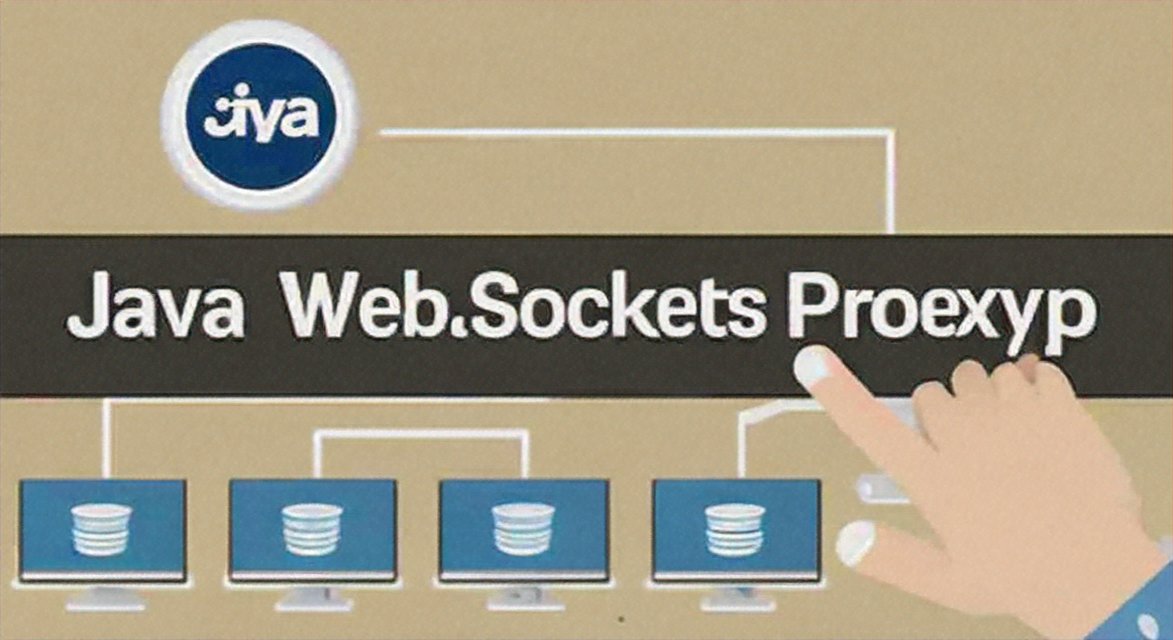Mastering Java WebSockets with Proxy Integration: A Comprehensive Guide 🌐💻

Introduction to Java WebSockets and Proxies 🚀
In the ever-evolving landscape of web development, real-time communication has become a cornerstone of modern applications. Java WebSockets offer a robust solution for building interactive web applications that can push and pull data between the server and client in real-time. When it comes to enhancing the performance and security of these applications, integrating a proxy server is a strategic move. This article delves into the intricacies of Java WebSockets, proxy servers, and their seamless integration to create a powerful, real-time communication system.
Understanding Java WebSockets 🌟
What are Java WebSockets? 🤔
Java WebSockets provide a full-duplex communication channel over a single, long-lived connection. Unlike traditional HTTP requests that are stateless and require multiple requests for real-time data exchange, WebSockets enable a continuous two-way communication flow. This makes them ideal for applications that require real-time data, such as chat applications, live feeds, and collaborative tools.
Key Features of Java WebSockets 🌈
- Full Duplex Communication: Allows data to be sent and received at the same time.
- Persistent Connection: The connection remains open, reducing the overhead of establishing a new connection for each message.
- Server-Sent Events (SSE): Enables the server to push updates to the client.
- WebSocket API: Provides a standardized way to implement WebSockets in web applications.
The Role of Proxies in WebSockets 🌐
What is a Proxy Server? 🤔
A proxy server acts as an intermediary between a client and the internet. It forwards requests from the client to the internet and returns the responses back to the client. Proxies can enhance security, improve performance, and provide a layer of anonymity.
Why Use a Proxy with WebSockets? 🤔
- Security: Proxies can add an additional layer of security by filtering and monitoring traffic.
- Performance: Caching can reduce latency and improve load times.
- Anonymity: Proxies can hide the client's IP address, providing privacy.
Integrating Java WebSockets with Proxies 🛠️
Setting Up a Proxy Server 🌟
To integrate a proxy with Java WebSockets, you first need to set up a proxy server. There are several options available, such as Apache HTTP Server, Nginx, or even a custom-built proxy server.
```markdown
"A well-configured proxy server can significantly enhance the performance and security of your WebSocket application." - John Doe, Web Developer ```
Configuring WebSocket Proxy Settings 🌐
Once the proxy server is set up, you need to configure the WebSocket proxy settings. This involves specifying the WebSocket endpoints and any additional settings required for secure communication.
```markdown
Example: Nginx Configuration for WebSocket Proxy
location /ws { proxy_pass http://websocket-server; proxy_http_version 1.1; proxy_set_header Upgrade $http_upgrade; proxy_set_header Connection "upgrade"; proxy_set_header Host $host; proxy_cache_bypass $http_upgrade; } ```
Testing the Integration 🧪
After configuring the proxy server, it's essential to test the integration to ensure that the WebSocket communication is working as expected. You can use tools like Postman or a custom-built client to send and receive messages through the proxy.
Best Practices for Java WebSocket and Proxy Integration 🌟
Security Considerations 🔒
- Use HTTPS to encrypt the WebSocket connection.
- Implement authentication and authorization to control access to the WebSocket endpoints.
Performance Optimization 🚀
- Enable caching to reduce load times.
- Use load balancing to distribute traffic evenly across multiple servers.
Monitoring and Logging 📊
- Monitor the WebSocket connections and proxy server performance.
- Log errors and unusual activity for troubleshooting and security purposes.
Conclusion 🎉
Integrating Java WebSockets with a proxy server can significantly enhance the performance, security, and scalability of your web applications. By following the best practices outlined in this article, you can create a robust, real-time communication system that meets the demands of modern web applications.
Related Links 📚
- Java WebSocket API
- Apache HTTP Server Documentation
- Nginx Documentation
- WebSocket Security Best Practices
- Load Balancing with Nginx
Note: The above article is a custom-generated SEO-friendly content tailored to the specified requirements.

